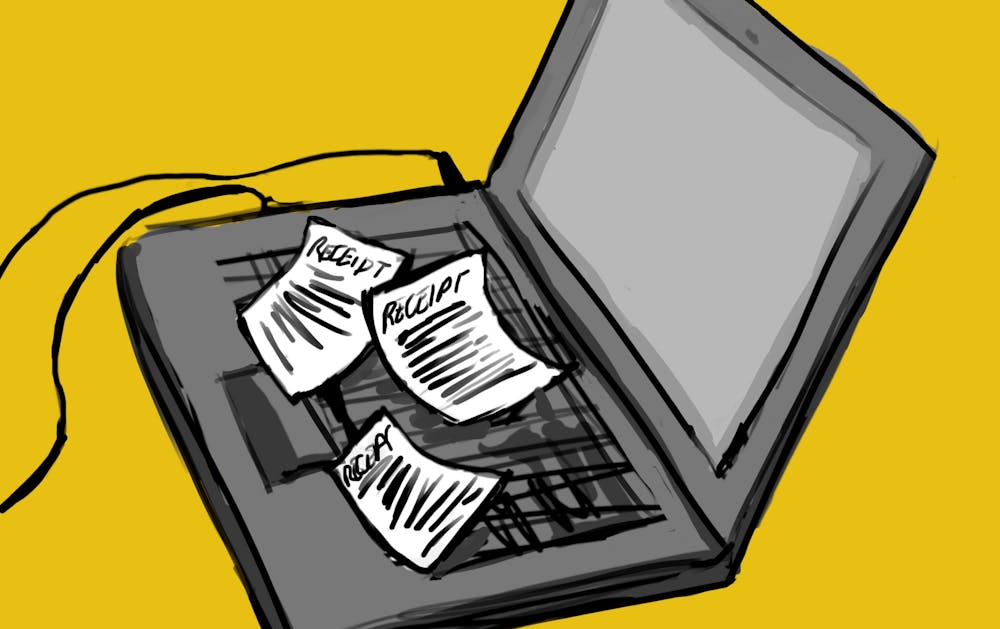Anyone campaigning for a position in Undergraduate Student Government is allowed to spend money on their campaign, just like candidates at the city, state and federal level.
Money comes from the students themselves, but the Associated Students for ASU puts a cap on how much students can spend to maintain a "fair" playing field.
The elections code says any person vying for a seat in the senate can spend up to $250. Executive candidates for USG Downtown, Poly or West can spend up to $750, while those for USG Tempe can spend up to $1250.
This year, two executive tickets went into a runoff after the general election and were extended an additional $250 for the added days of campaigning.
"These caps exist to provide an equal opportunity for all students to participate," ASASU Elections Commissioner Carla Naranjo said.
This year, campaigns were moved to a virtual setting due to the new coronavirus. Some candidates said they had to consider social media as their main communication platform with student constituents and used paid apps to aid in their campaign.
Clay Robinson, a freshman studying civic and economic thought and leadership who campaigned for a senate seat in The College of Liberal Arts and Sciences, used $7.99 on a photo editing app to enhance his social media posts.
"In-person would have yielded a larger tab," Robinson said.
Robinson was the only senate candidate across all four campuses who spent money on his campaign. Other senators used Twitter to share their message or reached out to their friends about election day.
Executives have a larger cap on money because they have more students to reach, Naranjo said.
The Leveque ticket spent the most, accumulating an expense report totaling $1,240.40 at the end of campaigning. Comparatively, the Palmer ticket spent $1,073.99 and the Fees ticket spent $946.91.
On other campuses, the cap is lower, and all tickets kept their expenses below $400. The USG West Carranza executive ticket spent the next highest amount at $367.87. The Anderson ticket from USG Polytechnic spent $292.83 and the USG Downtown Thompson ticket spent $137.15.
The only ticket who did not spend a majority of their funds on shirts was the Thompson ticket. They spent $25.63 on shirts and the remaining $97.50 on buttons.
"Had we known from the start that there would be no in-person campaigning, we likely would not have purchased the shirts and buttons based on the feasibility of our staff receiving them and them actually helping raise awareness," said Nora Thompson, USGD president-elect and a junior studying public service and public policy in an email.
Other executive tickets spent a majority of their funds on shirts. The Anderson ticket for USGP spent all of their $292.83 on shirts, too.
The Leveque ticket spent the most on their campaign, but their efforts were not successful. The ticket only made it through the first two weeks of campaigning and was not included in the runoff. Of their $1,240.40 spent, $911.28 was spent on shirts.
The Fees ticket spent the least amount out of the rest of the Tempe tickets, only spending $946.91 on their campaign. The majority of their money, $742.38, was spent on shirts. The rest went to promoting posts on their campaign Instagram page that amassed 1,331 followers.
"If anything, this cycle has proven how effective online marketing and other free resources can be," Thompson said. "We decided to focus more of our time on our platform and meeting with different student groups."
The Palmer ticket, which will take USGT office after the Fees ticket was disqualified, spent $829.82 of their total $1,073.99 expenses on shirts.
READ MORE: Palmer ticket to hold USGT office despite losing runoff election
The cap on expenses comes from the elections code set by members of the student Senate and affirmed by executives.
"I appreciate the cap because it makes the playing field level," Robinson said.
Naranjo said she thought having the University provide money for campaigns would be a "good idea."
"I would support that, but I'm not sure of the details," Naranjo said.
While the money comes out of the pockets of the candidates and the cap attempts to make the playing field more fair, there are still inequities.
"At the end of the day, the code is still expecting students to have a disposable income to run," Naranjo said.
Reach the reporter at pjhanse1@asu.edu and follow @piperjhansen on Twitter.
Like The State Press on Facebook and follow @statepress on Twitter.

Piper Hansen is the digital editor-in-chief at The State Press, overseeing all digital content. Joining SP in Spring 2020, she has covered student government, housing and COVID-19. She has previously written about state politics for The Arizona Republic and the Arizona Capitol Times and covers social justice for Cronkite News.




